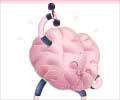Exercise appears to help females more than males in preventing cardiovascular disease, a new study has found.
The study was conducted by a team of researchers led by Sebastian Brokat at the Center for Cardiovascular Research in Berlin, Germany.While cardiovascular disease occurs in both men and women, its risk factors and protective factors are likewise unequal. The molecular mechanisms responsible for these differences are so far unknown, but some believe it is due to chromosomal linked genes or sexual hormones such as estrogen and testosterone. While the mechanisms behind the differences are unknown, the physiological differences are clear.
Exercise is an important factor in preventing cardiovascular disease. Frequent exercise leads to the physiological remodelling (change) and hypertrophy (beneficial enlargement) of the heart. This type of hypertrophy is different from pathological hypertrophy (an abnormal enlargement that leads to problems such as heart failure).
Pathological hypertrophy is also irreversible. There have been several descriptions on the effects of estradiol and testosterone (female and male hormones, respectively) on pathologic hypertrophy, but very little research has been conducted on the physiological remodelling of the heart.
As part of the study entitled 'Voluntary Exercise Induces Sex-Specific Physiological Cardiac Remodeling', researchers focused on chronic voluntary exercise, an important factor which protects the heart against cardiovascular diseases and observed it in both male and female mice during the course of 5 and a half weeks using a running wheel.
Researchers also held a control group of mice under the same conditions, but without the exercise wheel.
Advertisement
The study found that the female mice had a much higher level of exercise performance and had a greater increase in of left ventricular hypertrophy (LV) mass compared to their sex-matched sedentary controls who experienced a 20 percent decrease in the protein that promotes cell function while there were no changes in males.
Advertisement
"This study finds that exercise appears to help females more than males. The findings bring us a step closer to explaining the sex bias in physical activity that protects the heart," Brokat said.
Source-ANI
LIN/J











